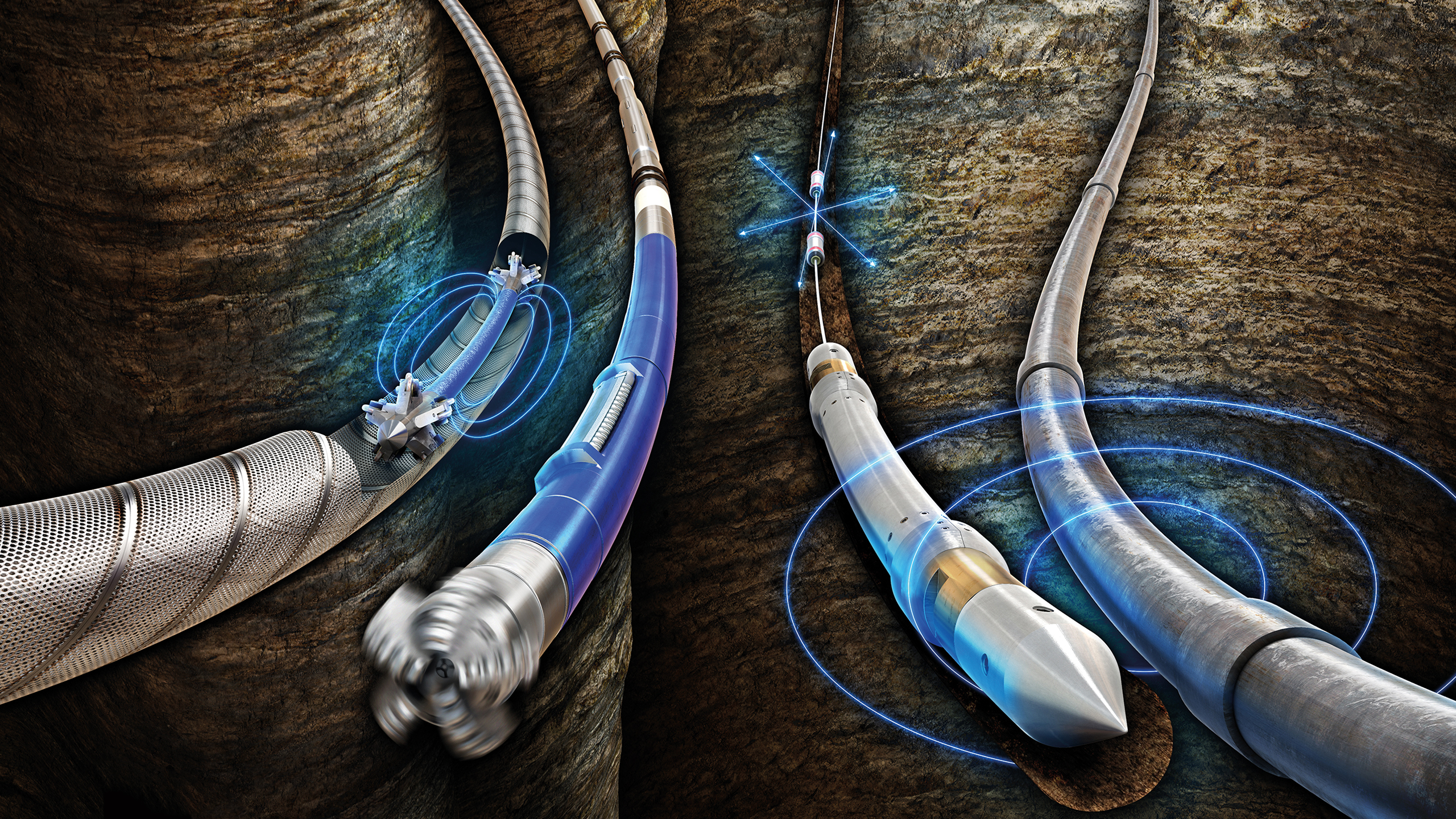Smart Drill Head
IAV and SDI are developing a distributed system for diagnosing oil, gas and geothermal drilling systems
Drill heads are brimming with sensors and electronics. If problems occur, they need to respond as autonomously as possible. Together with its german client Scientific Drilling International (SDI), located in Celle (Germany), IAV has developed a distributed diagnostic system that is based on approaches from the automotive sector, but also uses solutions that could be of interest for future applications.
Nowadays, oil and natural gas reserves can no longer be tapped without high-tech. On their way down into the depths, modern drill heads not only have the capability of moving vertically through rock with a high level of precision but also horizontally. This makes it possible to extract the sought-after hydrocarbons below geological strata in a horizontal direction more efficiently than it is with conventional vertical drilling technology.
Among the world’s leading specialists in this field is SDI. The company is an independent service provider that offers complete, high-precision drill hole navigation and drilling solutions. Founded by a wine-growing family in California, SDI develops and produces highly advanced electronic sensors for measurements while drilling (MWD) and logging while drilling (LWD), wireline control or directional drilling. Worldwide, SDI operates in 26 countries and carries out both geothermal and horizontal drilling work in coal bed methane seams as well as complex conventional and unconventional oil and gas projects.
In these drilling projects, SDI’s drill heads are permanently exposed to enormous loads, from high temperatures and pressures to large acceleration levels from severe vibrations. During the drilling process, the drill head is not connected with the above-ground control center by cable for data communication, but instead information is communicated over a depth of several kilometers by means of a complex procedure using the flushing liquid. Because of the very narrow bandwidth of just a few bits per second that can be transferred by the medium known in specialist circles as “mud”, it is not possible to send detailed information on the state of the drill head to the surface. In the opposite direction, control commands can only be transmitted to the drill head with a high latency, making it difficult to respond to technical problems within an acceptable period of time. Just like a modern vehicle, the drill head is brimming with sensors and electronics to monitor the state of all components and automatically take action whenever necessary. “SDI has a huge interest in guaranteeing drill head availability based on autonomous substitute reactions whenever malfunctions are identified, even in emergency operating mode. It is extremely expensive to bring the drill head back to the surface from a depth of several kilometers”, explains Ulrich Michael, responsible manager in software development at SDI.

OBD for oil and gas production
Several control units, connected via a proprietary data bus, capture the measurement values and monitor the technology – in the same way as they do in a car. And so the idea was born to use IAV’s expertise from on-board diagnostics (OBD) in oil and gas extraction. “Since the beginning of 2017, we have been developing the software for a distributed system for diagnosing SDI drill heads which can identify faults and autonomously respond to them with substitute reactions”, Stefan Kuppe, project manager for software development at IAV says. “If, for example, a sensor value fails, our systems captures this failure with a fault entry. Through a configurable link to a fault handling routine at another point in the system, a substitute value can be computed, for example on the basis of a model. This means there is no need to interrupt the drilling process.”
Tree structure for fault forwarding
The distributed diagnostic system is based on a tree structure. Faults in a component are passed up until they reach the main node. The instructions for the substitute reactions take the opposite route to the subordinate nodes, enabling the system to react to a problem with simultaneous adaptations on several control units. “The underlying diagnostic concept comes from automotive engineering”, Kuppe says. “Among other aspects, this includes the interface for detecting the specific fault, debouncing the fault, saving additional information, such as temperature or pressure, as well as stopping further diagnoses to avoid followon faults.” New, however, is the communication protocol which provides the basis for exchanging information on faults and fault response in the drilling system.
The software for SDI is being developed using agile methods, with new contents being generated in three-week sprints and then reviewed at the end in cooperation with the customer. The embedded software is written in the classic way in C whereas the user interface is based on C# .NET. All software components are validated by means of static and dynamic tests in compliance with IAV’s internal quality guidelines. “The distributed diagnostic system will be integrated into the drill head for the first time in the fourth quarter of 2018”, Kuppe reports. “But our generic concept is not restricted to the drilling industry. Other industrial applications are also conceivable, for example the Internet of Things.“
